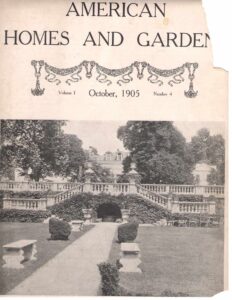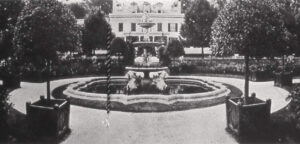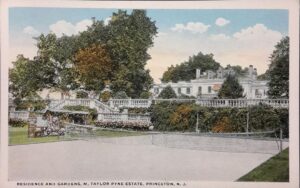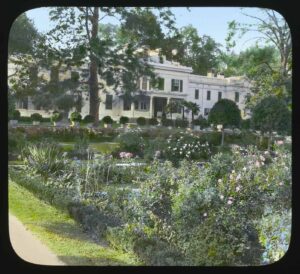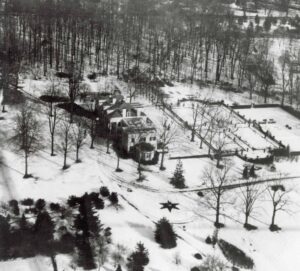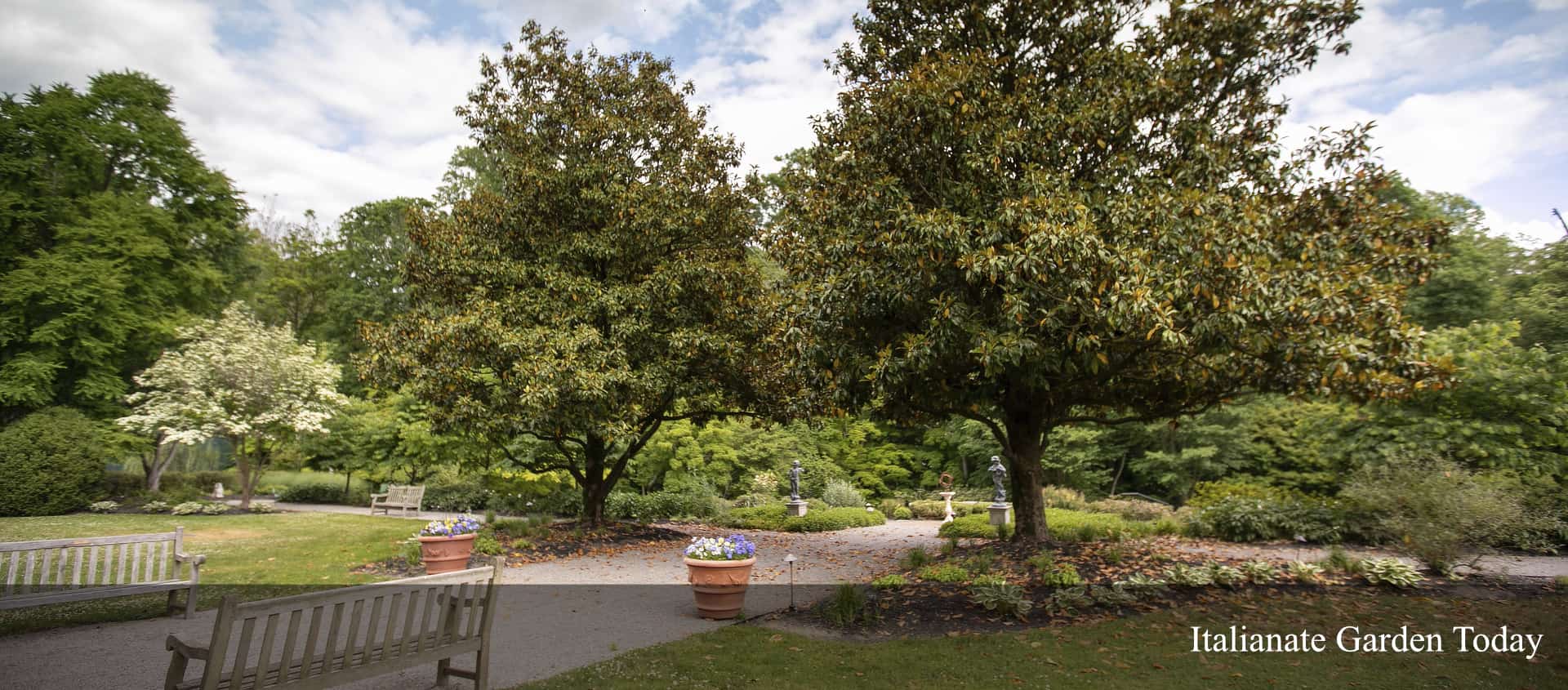
The Italianate Gardens
When Moses Taylor Pyne (1855-1921) and his wife Margaretta Stockton Pyne (1856-1939) purchased Drumthwacket from the Olden estate in 1893, they set upon a course of developing the already important property into an English country-style manor house. Noted architect Raleigh C. Gildersleeve was engaged to design the residence’s East and West wing additions and prominent Morristown landscape architect Daniel Webster Langton, one of the eleven founding members of the American Society of Landscape Architects, was hired to design Drumthwacket’s entire property which, under Pyne’s direction, had grown to over 300 acres. Langston’s design included woods, ponds, lawns, walking and bridle paths, a bowling green, and a lawn tennis court. The centerpiece of Langston’s design was the formal Italianate gardens directly behind the home. Inspired in part by the publication of the popular and influential Charles A. Platt’s Italian Gardens in 1895 and specifically, the Villa Giamberaia in Settignano, Italy, the site, with a vertical drop of about 25 feet in 260 feet, was suited to Italian-style terracing.
When Abram Spanel purchased Drumthwacket in 1940, the home had been unoccupied for several years and the acreage and farm buildings had been sold. The Spanels enjoyed the gardens but lived in a modern and less elaborate style suited to the mid-twentieth century. During the years between 1966, when Drumthwacket was purchased by the State of New Jersey with the intent that it be used as the executive residence, and 1990 when Governor James Florio took residence, the gardens had deteriorated because the house had been uninhabited.
In the 1990s, First Lady Lucinda Florio and the Drumthwacket Foundation spearheaded the drive to renovate the beautiful Italianate gardens using privately donated funds. Under the direction of Professor Connie Webster of Cook College, Rutgers University, students prepared conceptual plans which were used as a reference for the final design by New Jersey landscape architect Paul Dorko. Beginning in 1992, retaining walls were rebuilt, paths recreated, and plant specimens replaced. Retaining the original axial relationships and the overall terraced shape was important in the redesign concept.
In 2020, the Drumthwacket Foundation partnered with the Center for Urban Environmental Sustainability at Rutgers University to update the 1990 master plan. Under the direction of CUES Co-Director Wolfram Hoefer, student interns developed a plan to showcase Drumthwacket as a model for modern sustainability and its ability to harmonize with the goals of public engagement, education, and historical preservation.
Today, the public may visit the gardens as part of a group or public tour of the residence. Tours are held most Wednesdays and are always free. Advanced online registration is required. The Drumthwacket Foundation is fortunate to be supported by a dedicated team of volunteer Master Gardeners who tend to the Italianate garden and property. For information about volunteering, click here
The Italianate Gardens
Click images to see larger views
Tap images to see larger views
American Homes and Garden
The October 1905 issue of American Homes and Garden, showcased Drumthwacket’s magnificent Italianate gardens on the cover and within its pages.
The Grand Fountain
The Central Path
The central path leading from the Grand Fountain, split into a twin stairway descending to the next level of the garden, eight feet down. Between the stairways was a small grotto with a tiger’s head fountain, a symbol of Moses Taylor Pyne’s affection for the mascot of his alma mater, Princeton University. When the State purchased the property, the foundation was severely deteriorated and buried in place in the 1990s per archeological standards.
Moses Taylor Pyne
Moses Taylor Pyne and an unidentified gentleman in the garden, c. 1910
Period Postcard
Local Princetonians and visitors were welcomed to stroll Drumthwacket’s splendid grounds. Period postcards, such as this one of the lawn tennis court (now gone) were published as souvenirs.
Country Estates of the Gilded Age
The Drumthwacket Gardens were famously photographed by Frances Benjamin Johnston (1864-1952), an early American photographer and photojournalist who, in the 1920s, traveled throughout Europe and the United States photographing the country estates of the Gilded Age social sect. Library of Congress.

